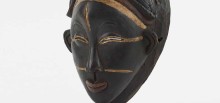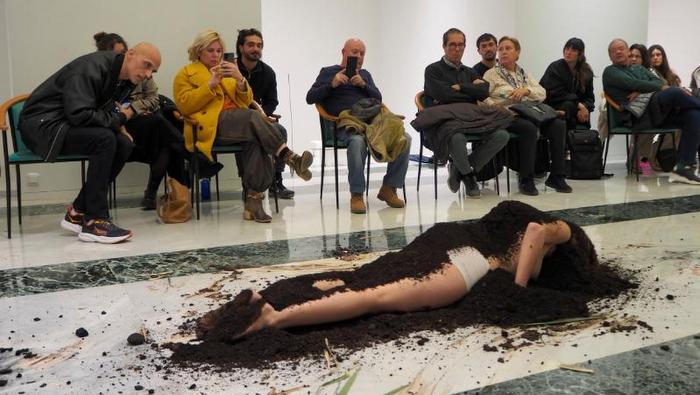Barcelona will have with the new Museum of world cultures from February. It will occupy the spaces of the Nadal House and Marquis of Llió House on Montcada Street. They are two historic buildings which have already host other Museum centers over the past decades such as the Textile and the clothing Museum or the headquarters of the temporary exhibitions at the Museum of Design in Barcelona.
The Museum of world cultures will be a platform for dissemination and knowledge of the artistic creation of cultures in Asia, Africa, America and Oceania, which will give visibility to the heritage that Barcelona and its collectors have gathered since the end of the 1940s: a testament on the human being’s relationship with the universe, their beliefs and their rituals.
The new Center will present a very important part of the loan, through a contract for twenty years, to the City Council of Barcelona related to some substantial part of the Fundación Folch collection, which was created by entrepreneur Albert Folch and currently directed by his daughter. It is some 2,400 objects of art from Africa, Asia, America and Oceania, complementing with funds from the Ethnological Museum of Barcelona and prominent private collections like the Clos archaeological Foundation and the Duran Vall-llosera archaeological collection.
Beauty and variety
An anthropomorphic figure made of brass, from the edo people of the Kingdom of Benin; a reimiro of the rapa nui culture of Easter Island, made of carved wood and black Obsidian; a tau tau funeral figure, made of wood, cotton, shells and hair, from the Celebes Islands in Indonesia; a stone head representing a Bodhisattva, from the ancient region of Gandhara, in Afganistán-Pakistan, and a glass of polychrome ceramics of the mochica culture, are some of the pieces of exceptional beauty that will be shown at the Museum.
They refer to cultures and ancient civilizations and they will be part of a world of beliefs and rituals. They will make the visitors wonder about the creativity of men and their ability to make up myths explaining the mystery of life. They are, in short, an invitation to the understanding, tolerance, recognition of cultural diversity and the understanding among peoples.
With this double, artistic and social, cultural and educational purpose the new Museum is emerged. The contrast with the Gothic surroundings of the buildings housing the pieces will be an attraction for the visitors and has a symbolic meaning related to appreciation, fascination and approach.
From Benin to Costa Rica
The permanent exhibition opens in Africa with the art of the ancient Kingdom of Benin and the fang culture in the Equatorial Guinea. It is also dedicated to the West and central Africa cultures: ceremonial figures, masks, figures destined for worshiping the guardian deities, the fertility rituals and the spirits protection. It includes works of the dogon, yoruba, senufo, baule, bembé, songye, bamanay hangs peoples, among others. The tour ended in Ethiopia, one of the cultural cradles of the continent, with the surprising expressions of the Christian art.
The first floor is dedicated to the pieces of Oceania and Asia starting with the arts of New Guinea. One of its principal axes is the House of Men, of the area near Sepik River. They also show the abelam initiation ceremonies, the asmat funeral ceremonies, the masks and the ancient sculptures discovered in the Karawari River region. The Oceania rooms close with a short approach to the rituals and the painting on Australia and the Polynesia arts.
Also Asia
The area of Asia begins with two rooms dedicated to the Philippines and Indonesia. India, with two more rooms, includes sculptural representations of Vishnu and Shiva, of the 5th century to the 16th, sculptures and architectural elements of the 17th, 18th and 19th centuries. One of its attractions is the space dedicated to the Gandhara art, some kind of extraordinary beauty exemplifying the mixing of forms and the iconography typical of classical Greek art with the Buddhist religion, as well as the extension of Buddhism in central Asia.
The tour continues with a space dedicated to the Tibet art, its imagery and the religious practices tantra, and ends with two rooms designed for the extension of Buddhism in Thailand and Burma. On the second floor, there are three rooms dedicated to Japan, China and Korea.
Finally, six rooms dedicated to pre-Columbian America since Middle America with ceramic funerary figures from the west side of Mexico until the ceramics of the Gran Nicoya as well as those of the Atlantic, in the Costa Rica Highlands.
The tour ends with a rapprochement to the arts and the pre-Columbian cultures of the Andena region, from the Valdivia figurine 3.000-1.500 a. de C to the Inca Empire.
Other type of resources
Besides the original works, the permanent exhibition will be support by a group of museum interactive resources and audiovisuals related to the graphic, film and documentary base of the ethnological museum of Barcelona and Folch Foundation, which will allow going deep into different aspects related to cultures and landscapes existing in the rooms. Parallel, temporary exhibitions will be organized (the first one dedicated to the writing) as well as educational activities.
The New Museum is part of the Barcelona history. It inherited from the collections created by the City Council throughout the 20 century and the passion by the collecting. Anthropologist August Panyella, who is the first director of the Ethnological Museum in Barcelona, collector and businessman Albert Folch and the sculptor and anthropologist Eudald Serra are the three main figures of thr origin of the biggest part of the collections the people can now enjoy at the Museum rooms.
During the 50’s, Albert Folch attended in the financing of many expeditions of the Ethnological Museum. These expeditions will allow carrying out field labors, compiling information and graphic documentation as well as buying unique pieces. A big part of the Folch collection, almost four thousand pieces, was given to the Museum.
Parallel, the Folch Foundation was created, which increased its collections with the acquisition of many works in the international art market and it dedicated its efforts to negotiate its funds as well as to promote the study and spreading of the world cultures.
The complicity between August Panyella and Albert Folch was translated into many travels and studies. On his part, Eudald Serra had an important role as an art driving at the ADLAN during the thirties. Like other contemporary artists, he felt attraction by the art no European, and in 1935, he moved to Japan where he lived for 13 years and began a series of sculptures of “plastic anthropology” that were also incorporated to the Ethnological Museum.
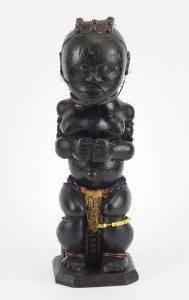
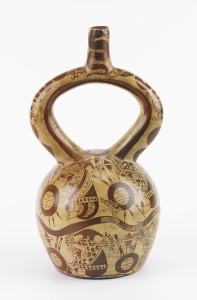
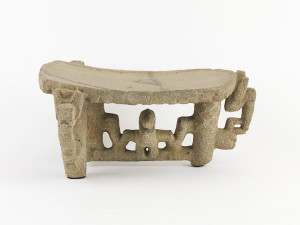
Source: hosesarte

